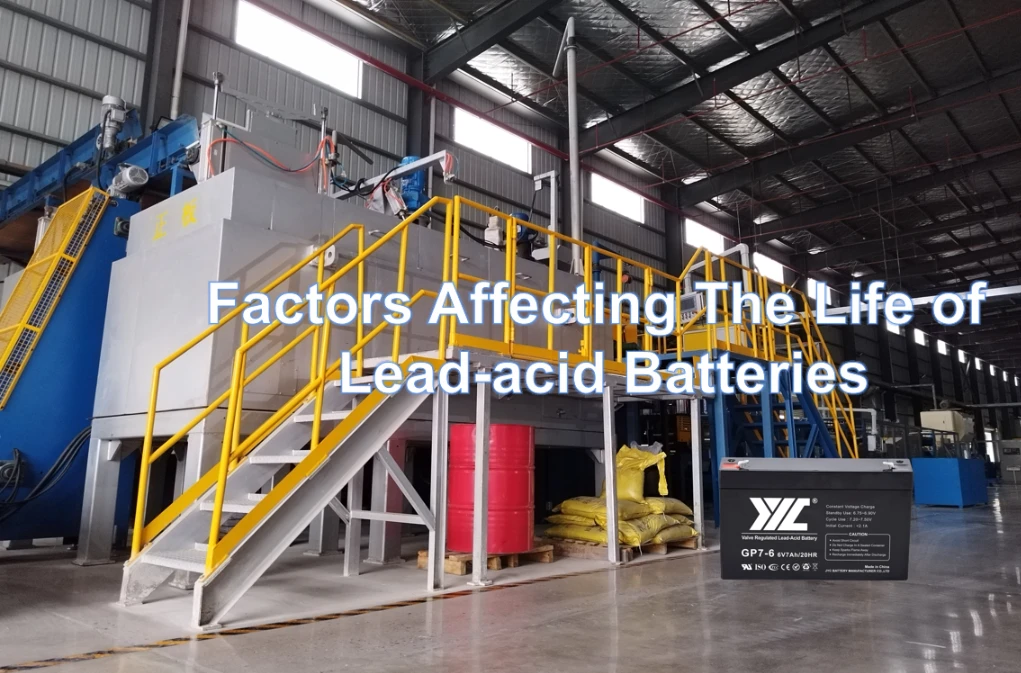
The failure of lead-acid batteries is the result of a combination of many factors. It depends not only on the internal factors of the plate, such as the composition of the active material, crystal form, porosity, plate size, grid material and structure, etc., but also on a series of external factors, such as discharge current density, electrolyte concentration and temperature, depth of discharge, maintenance status and storage time, etc. The main external factors are presented here.
Discharge Depth
The depth of discharge is the extent to which the discharge starts to stop during use. 100% depth refers to releasing the full capacity. The life of lead-acid batteries is greatly affected by the depth of discharge. The focus of design consideration is deep cycle use, shallow cycle use or floating charge use. If a shallow-cycle battery is used for deep-cycle use, the lead-acid battery will fail quickly.
Because lead dioxide, the positive active material, is not firmly combined with each other, lead sulfate is generated during discharge, and it returns to lead dioxide during charge. The molar volume of lead sulfate is larger than that of lead oxide, and the volume of the active material expands during discharge. If one mole of lead oxide is converted to one mole of lead sulfate, the volume increases by 95%. Repeated shrinkage and expansion in this way will gradually loosen the bond between the lead dioxide particles and make them easy to fall off. If only 20% of the active material of a mole of lead dioxide is discharged, the degree of shrinkage and expansion will be greatly reduced, and the destruction of the binding force will be slow. Therefore, the deeper the discharge depth, the shorter the cycle life.
Degree of Overcharging
When overcharging, a large amount of gas is precipitated. The active material of the positive plate is then subjected to gas shock, which promotes the shedding of the active material; in addition, the positive plate grid alloy is also subjected to severe anodic oxidation and corrosion, so that the battery overcharging will shorten the application period.
Effect of Sulphuric Acid Concentration
The increase in acid density, although beneficial to the capacity of the positive plate, increases the self-discharge of the battery and accelerates the corrosion of the plate grid, also contributing to the loosening and shedding of lead dioxide. As the acid density used in the battery increases, the cycle life decreases.
Effect of Discharge Current Density
As the discharge current density increases, the life of the battery decreases, because under the conditions of high current density and high acid concentration, the lead dioxide of the positive electrode is promoted to loosen and fall off.
Another failure mode is water loss. For open batteries, water loss is normal maintenance. For sealed batteries, it should not occur under strict control. Therefore, water loss is not included as a failure mode. The problem of water loss in sealed batteries is concentrated in the case of e-bikes. It is because the constant voltage value for charging is too high.
Effect of Temperature
The life of lead-acid batteries is extended with the increase in temperature. Between 10℃ and 35℃, every 1℃ increase, about 5-6 cycles, between 35℃ and 45℃, every 1℃ increase can extend the life of more than 25 cycles; above 50℃, the life of the battery is reduced due to the loss of capacity of the negative electrode sulphide.
Battery life increases with temperature over a range of temperatures because capacity increases with temperature. If the discharge capacity remains the same, its depth of discharge decreases at higher temperatures and the solid life is extended.



